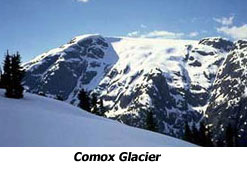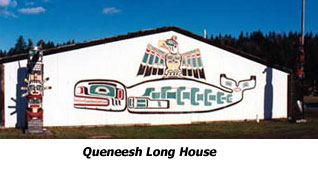Island Stories:
![]() Danzig
Mine
Danzig
Mine
![]() Zeballos
Iron Mine
Zeballos
Iron Mine
![]() Conuma
Peak 1910
Conuma
Peak 1910
Alexandra Peak
Argus Mountain
Bate/Alava Sanctuary
Beaufort Range
Big Interior Mtn
Big Interior Mtn 1913
Part 1
Part 2
Bolton Expedition 1896
Cliffe Glacier
Clinton Wood
Comox Glacier
Comox Glacier 1922
Comox Glacier 1925
Comstock Mtn
Conuma Peak
Copper King Mine
Crown Mtn
Elkhorn 1912
Elkhorn 1949
Elkhorn 1968
Eugene Croteau
Golden Bullets
Golden Hinde 1913/14
Golden Hinde 1937
Golden Hinde 1983
Harry Winstone Tragedy
Jack Mitchell
Jim Mitchell Tragedy
John Buttle
Judges Route
Koksilah's Silver Mine
Landslide Lake
Mackenzie Range
Malaspina Peak
Mariner Mtn
Marjories Load
Matchlee Mountain
Mount McQuillan
Mt. Albert Edward
Mt. Albert Edward 1927
Mt. Albert Edward 1938
Mt. Becher
Mt. Benson 1913
Mt. Benson
Mt. Doogie Dowler
Mt. Colonel Foster
Mt. Hayes/Thistle Claim
Mt. Maxwell
Mt. Sicker
Mt. Tzouhalem
Mt. Whymper
Muqin/Brooks Peninsula
Nine Peaks
Queneesh
Ralph Rosseau 1947
Rosseau Chalet
Ralph Rosseau Tragedy
Rambler Peak
Red Pillar
Rex Gibson Tragedy
Sid's Cabin
Steamboat Mtn
Strathcona Park 1980's
The Misthorns
The Unwild Side
Victoria Peak
Waterloo Mountain 1865
Wheaton Hut/Marble Meadows
William DeVoe
Woss Lake
You Creek Mine
Zeballos Peak
Other Stories:
Sierra
de los Tuxtlas
Antarctica
Cerro del Tepozteco
Citlaltepetl
Huascaran
Mt. Roraima
Nevada Alpamayo
Nevada del Tolima
Nevado de Toluca
Pico Bolivar
Popocatepetl
Uluru/Ayers Rock
Volcan Purace
Volcan San Jose
Biographies
Island 6000
Cartoons
Order the Book
Contact Me
Links

Queneesh:
And
Other Myths...
by Lindsay Elms
 Above
the Comox Valley on Vancouver Island the white, frozen ice of the Comox
Glacier presides majestically over the inhabitants. To the
Comox First Nation's People, the valley's original inhabitants, this glacier
is more affectionately known as Queneesh - the great white whale.
Above
the Comox Valley on Vancouver Island the white, frozen ice of the Comox
Glacier presides majestically over the inhabitants. To the
Comox First Nation's People, the valley's original inhabitants, this glacier
is more affectionately known as Queneesh - the great white whale.
The glacier is a perpetual sheet of frozen water curling and grinding its way over the top of the mountains the way a fog bank sweeps in over the ocean enveloping everything in its path. Residents of the Comox Valley (Courtenay, Comox and Cumberland) can view the glacier from their main street and for many it is one of their lifetime ambitions to climb to the summit.
The glacier has become a focal point for many of the valley artists and its outline can be seen on business cards, tourist brochures, postcards and magazines. These advertisements in turn attract many visitors to the recreational capital of Canada, as the valley is known, to come and see the glacier shimmering in the afternoon sun.
The Comox Glacier has been there since time immemorial and the legend of Queneesh has played an important role for the First Nations. It gives the present people knowledge of the past and a pride in their ancestors. It recounts the time when there was a great flood that inundated the land and is similar to the biblical story of Noah and his Ark. It is a legend that has familiar overtones to those of the First Nations farther up the northwest coast. They also talk about a great flood.
The highest mountain in North America is Mt. McKinley or Denali as it is more often referred to as nowadays. Its icy summit is found in Alaska and is important to the Koyukuk people who live in the valleys to the north of the mountain. They have a myth that tells of an unusual flood that turned Denali into a wave of stone.
Back in a distant time the Raven, a bird known by many as the trickster, assumed the form of a young man. He had heard of a beautiful maiden in a village across the water, so he took a canoe across to ask her to marry him, but she refused. He was offered a baby girl by another woman, so took the child and he began to paddle away. The beautiful maiden was jealous and came down to the water where the Raven punished her for rejecting him. He made her sink into the mud and disappear.
The maiden's mother was furious and set two bears to beating up the waves to drown the Raven. Their efforts caused the waters to rise and inundate the world so that the village perished. The waves were towering above the Raven's canoe and he soon became tired with fatigue from the struggle, so using his magic powers he cast his harpoon at a wave and then fainted.
Later when he awoke, he found that the wave he had hit with his harpoon had turned to stone, forming a small mountain. After glancing off the crest, the harpoon had struck an even larger wave, which had become Denali. Upon looking around, Raven found that the baby girl had now grown into womanhood, so he took her in his arms, and they repopulated the world.
A little further to the south on the Alaska/Yukon border is Mount Saint Elias, Canada's second highest mountain. To the Yakutat Tlingit people who live in the vicinity of Yakutat Bay below the glaciers of this mighty mountain, they also believe that a great flood covered the earth. In their lore they talk about the summit of Mount Saint Elias and two other mountains that remained above the flood waters. Denali to the north would fit in with the story and possibly the other mountain is the Comox Glacier to the south.
To the Yakutat Tlingit,
the mountain has played such an important role in their history that they
even made it their crest. On special occasions they perform ceremonial
dances in which they wear shirts with the stitched design representing
the peak surrounded by clouds depicted as circles.
In the Comox Valley, the legend of Queneesh tells how an old man had a
dream where he was told to warn the Comox people to prepare for a coming
disaster.
The voice in the dream tells him that soon the rain will begin to fall and it will not stop for a long, long time. This constant rain will result in tremendous flooding and the people must work hard to prepare themselves for this time. The Comox chief listens to the old man's story and due to his respect for their elders, decides to take his advice.
Groups were assigned various tasks, some to build more canoes; others to harvest much cedar bark and then have it prepared for weaving, as many miles of rope will be needed. Fish had to be smoked, seafood dried and preserved, deer hunted and the meat cured and made ready. Yet others were to make capes and woven hats that would be needed to shed the rain. Even the young children had to give up their games in order to help with the preparations.
Finally everything was ready and just in time. As the voice in the dream predicted, the rain began. A group of the strongest and wisest men was sent to the top of the glacier where they were to find the ideal location to attach the cedar ropes. The place of attachment was crucial as the very future of the people depended on their correct choice.
Before long the rivers began to flood so the canoes were loaded with their provisions, necessities and people, and attached to the cedar ropes from the glacier. Soon the waters rose above the totem poles and each day, they saw things that there was no room for in their canoes, float by.
The rain continued to pour, the people became more frightened and the canoes required constant bailing. Days and nights passed and the waters rose up the sides of the mountains. The rain was relentless. Eventually the day came when the glacier was almost covered and every person began to pray to the great spirit, and then something they had never dreamed possible occurred. The glacier, the very one that they had seen and watched from a distance for many years, suddenly took on a life of its own. It began to float and broke through the surface of the flood waters, the way a great whale breeches. At first the people were in awe of this unusual spectacle but they soon began to understand what was happening. The people began to laugh and cheer, and cry out to each other. "The glacier is a huge white whale!" they say. "Queneesh."
Soon, to their joy, the rain stopped and for the first night in a long time they were able to have a comfortable sleep in their canoes.
Next morning the sun shone
through brightly and there was great excitement in the canoes. There was
laughter and words of praise in their voices. The people began planning
celebrations for when they would be safely back at the site of their village.
As the waters subsided, Queneesh began to settle back into his former
position where the people see him  and
admire him to this very day - overlooking the whole Comox Valley as if
he were resting upon a throne.
and
admire him to this very day - overlooking the whole Comox Valley as if
he were resting upon a throne.
So honoured is Queneesh that on the tribal grounds by the Comox estuary he is symbolized in paint on the front of one of the remaining long houses. Here the people assemble, dance and sing in the shadow of Queneesh.
For many people these mountains are nothing more than rock and ice, a frigid cold place where no one lives. But as we can see from these stories told by indigenous people, they are the homes of animals and mythical creatures, maybe we too can see the spirits they talk about and honor.
How to order | | About the Author || Links || Home
Contact:
Copyright ©
Lindsay Elms 2001. All Rights Reserved.
URL: http://www.beyondnootka.com
http://www.lindsayelms.ca